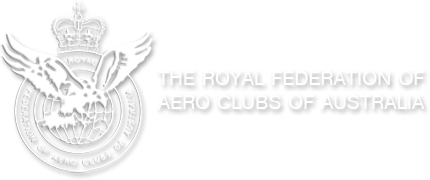History of The Royal Federation of Aero Clubs of Australia
The origin of the Royal Federation of Aero Clubs of Australia dates back to the 28th October 1914, when a group of young officers of the newly formed Australian Flying Corps met at Point Cook, Victoria, and decided that an Australian Aero Club should be formed to advance the cause of aviation and be affiliated to the Royal Aero Club in London.
The meeting Chairman was Captain H.A. Petre, who had been brought out from England to inaugurate a flying school for the Australian Government and had chosen Point Cook near Melbourne as the most suitable area. The first Secretary was Captain T.W. White, later to become The Hon. Sir Thomas White, K.B.E., D.F.C., V.D. Another member was Lieutenant R. Williams, later Air Marshall Sir Richard Williams KBE, CB, DSO, who is widely recognised as the father of the Royal Australian Air Force.
The outbreak of the First World War delayed further development until 1919, when individual sections of the Australian Aero Club were formed in Victoria, New South Wales, Queensland, Tasmania, Western Australia and South Australia.
The national aero club movement as such first came into being in March, 1926 under the name of the Australian Aero Club Federal Council and consisted of representatives of the Victorian and New South Wales Clubs only. South Australia joined in 1927, Queensland and Tasmania in 1928, and Western Australia in 1929, when a new association was formed and the name changed to the Associated Australian Aero Clubs. The name was again changed to the Aero Club Federation of Australia in 1948. During 1960 the prefix “Royal” was granted by Her Majesty and the present title adopted.
At first the primary object of the movement was to develop interest in flying throughout the Commonwealth. Particular attention was paid to aerial pageants and air races and the organising of public receptions for pioneer aviators at the end of their historic flights. These were accompanied by flying displays and were enormously popular and well attended.
In the 1930’s however, the aero clubs began to realise their defence potential and to make vigorous representations to the Federal Government for financial assistance, which would enable them to train a larger number of pilots at a reasonable cost to the individual.
At the outbreak of war in 1939, several of the larger Clubs were turned into elementary flying training schools and provided the instructors, aircraft and ground maintenance facilities to train cadet pilots for the RAAF which was then able to concentrate on intensive instructor training.
After the war the Clubs were entrusted with the training of National Servicemen, Air Training Corps Cadets, General Reservists, University Air Squadron Cadets and some Citizen Air Force Cadets. The official flying time involved was more than 40,000 hours.
In later years the emphasis shifted away from the training of pilots for defence purposes and the Government looked to the Aero Clubs to train an ever increasing number of commercial pilots for Australia’s airlines, the rapidly expanding aerial agricultural industry and to meet the demand for charter and personal pilots. The RFACA responded by introducing a unique low cost scheme, the Airline Pilot Training Scheme, the graduates of which are held in high regard by the airline industry.
Today a primary role of the RFACA is the representation of its members at Federal and State Government levels, encouraging the establishment of Flying Training Facilities, and helping to promote the development of all facets of private, sporting and recreational aviation having now included as members, in addition to Aero Clubs, Flight schools and many sporting aviation groups and associations currently active in Australia.
